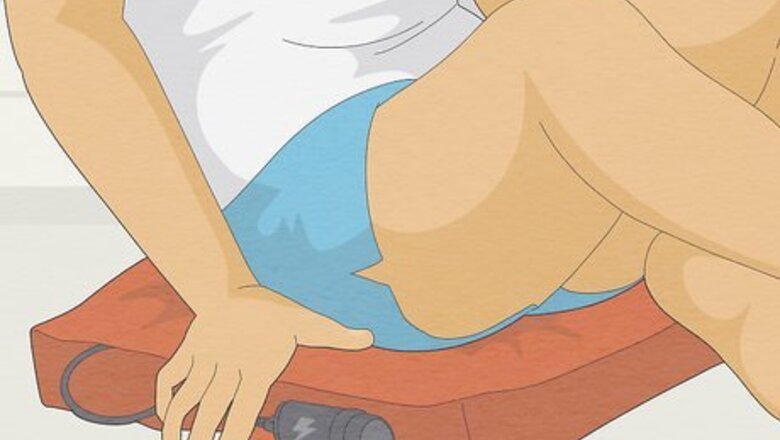
views
Apply a heat pad.
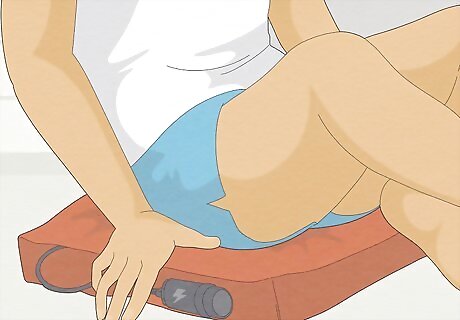
Targeted heat will soothe muscle spasms and ease your pain quickly. Sit on a heating pad and turn it on the lowest heat setting. Give the heat a few minutes to radiate through your backside. The heat will relax your muscles and give you a break from the pain. Take a break every 10-15 minutes form the heat and always protect your skin by increasing the heat slowly and using a protective cover for the heating pad. Alternatively, you may warm up some hot water, pour it into a water bottle, and then wrap the bottle in a T-shirt and use that.
Take a warm bath.
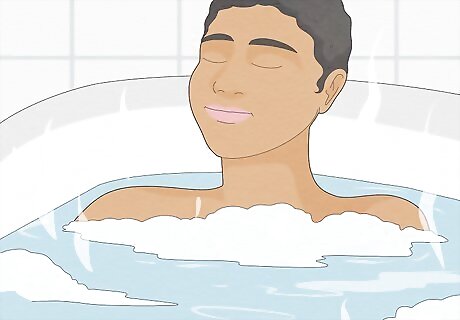
Submerging yourself in warm water will relax your muscles. For a relaxing break from the pain, take a long, soothing bath to take the edge off your cramps. Fill your bath, lie down in the water, and crack open your favorite book to relax. Your butt will feel much better when you get out! Light some candles, throw in some Epsom salts or bubbles, and put on your favorite relaxation tunes to really set the mood.
Stand up more often.
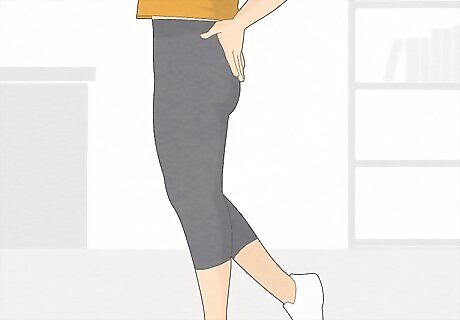
Your butt muscles are more likely to cramp if you sit a lot. If you spend long parts of your day sitting at a desk for work or school, find excuses to stand up more often. Take work calls on your feet while you waltz around the room, or ask your teacher if you can stand at the back at the room while you take notes. Get on your feet more often and your butt cramps may show up less often. If you’re looking to relax instead of burning calories on your feet, go ahead a lie down instead! That will be easier on your butt than sitting.
Take a walk.
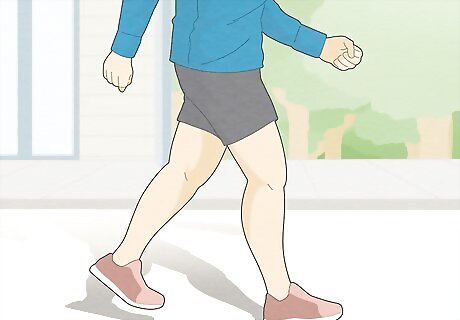
Moving around exercises your pelvic muscles and reduce pain. The weaker your stomach and hip muscles are, the more painful the cramps will be. Taking a stroll gives these muscles a little workout, which will help relieve butt pain and prevent it (or at least minimize it) in the future. This is why doing pelvic floor exercises, like Kegels, are almost certainly going to help with cramps in your butt.
Stretch it out.
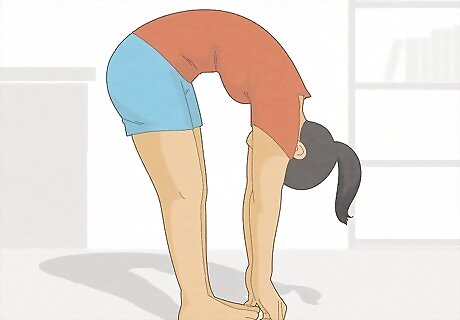
If you feel tight, some basic stretching will relieve the tension. Cramping is an involuntary contraction of the muscle. Stretching warms the muscle by applying pressure, which removes the need for your muscle to tighten. This makes any stretch that works your glutes ideal for butt cramps. You might try: Walking lunges. Stand up straight and then take a step forward with one foot. Bend your back knee down and keep your frame upright. Then, alternate legs. This is a great dynamic stretch for your butt. Sitting hip stretches. Sit up straight in a chair with your left ankle over your right knee. Push down for 15-20 seconds. Then, swap legs. This will work your outer quad muscles, hips, and lower back. Toe touches. Stand up straight with your feet together. Then, reach down and try to touch your toes. This will work your upper thighs, hips, and the base of your pelvis.
Take ibuprofen for general pain.
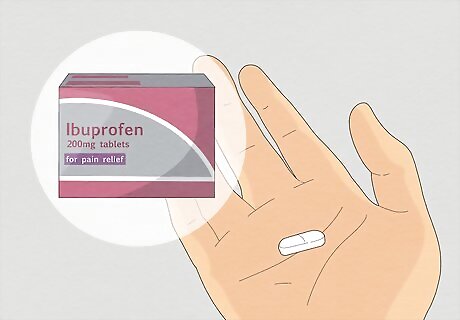
Treat painful butt cramps directly with 200-800 mg of ibuprofen. Ibuprofen is anti-inflammatory, and your pelvic muscles can swell quite a bit when you’re cramping over and over again. When you first start experiencing a butt cramp, take some ibuprofen with a cup of water to relieve symptoms. Do not take more than 800 mg per dose, or 3200 mg per day. Don’t take ibuprofen on an empty stomach. It can cause stomach pain if you take it and you haven’t eaten in a while.
Try loperamide for gut/rectal pain.
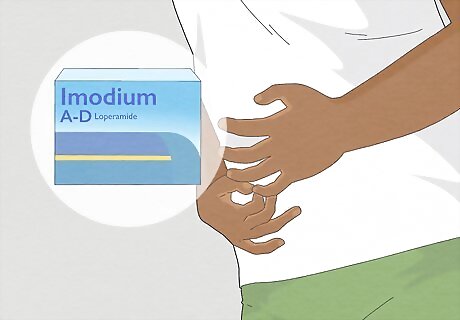
If your tummy is upset, use loperamide (Imodium) to sooth your symptoms. All of that muscle cramping can irritate your bowels. If you’re having a lot of diarrhea or painful bowel movements, take 4 mg of loperamide. This won’t fix your cramping issue directly, but it will give your pelvic muscles a break from all the diarrhea and upset stomach symptoms. This may also help if you tend to feel gassy when you have your period.
Drink plenty of water.
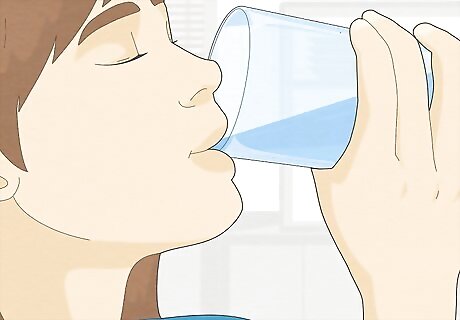
Staying hydrated helps your stomach stay stable and healthy. Drinking enough water helps to ensure regular bowel movements, which typically help your cramps. All of this uterine cramping and pain often triggers irregular or loose bowel movements. Drinking water prevents dehydration and helps you go to the bathroom a little more regularly. All of this usually minimizes the symptoms and impact of the cramps, so drink up! You can drink a sports drink or Pedialyte instead of water, if you prefer.
Follow the BRAT diet.
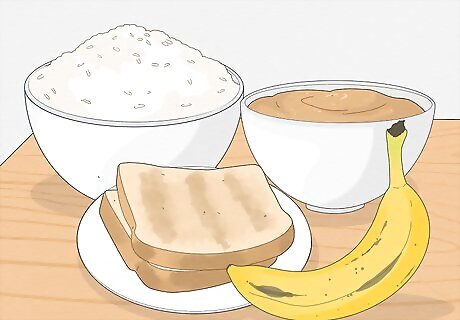
Treat your tummy right with bananas, rice, applesauce, and toast. Following the BRAT diet ensures everything you eat will be as digestible and soothing as possible. Stick with bland, easy-to-eat foods and ingredients to prevent stomach irritation. If you’re having any kind of stomach issues related to your cramps, this will calm your gut. For some women, the cramps cause an upset stomach. For others, the upset stomach causes the cramps. In either case, a simpler diet will help.
Avoid caffeine and processed foods.
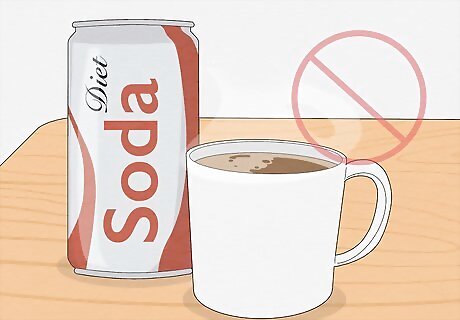
These items will tear through your guts, which can trigger cramps. Anything that’s high in salt, synthetic ingredients, or caffeine may increase the amount of stomach pain you experience. Do your best to stay away from the fast food, coffee, and soda while you’re on your period. Your stomach will thank you.
Talk to your doctor about endometriosis.
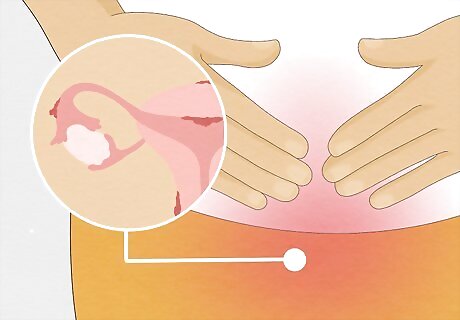
Excessive pelvic pain on your period can be a symptom of something else. If nothing seems to ease your period cramps and they really hurt, go see your doctor. This could be a sign of endometriosis, which is a disorder where the tissue in your uterus grows excessively. Other signs of endometriosis include: Painful intercourse. Painful urination or bowel movements. Excessive bleeding during your period. Constipation, nausea, or fatigue.














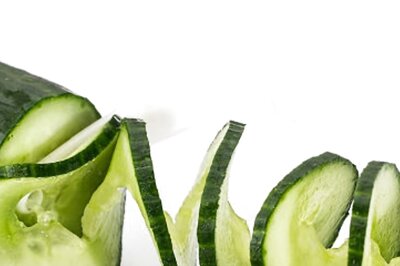
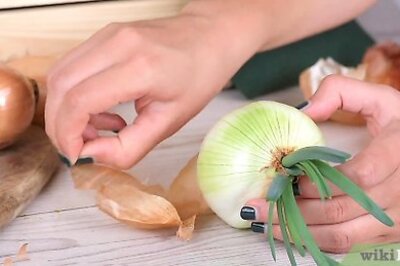




Comments
0 comment